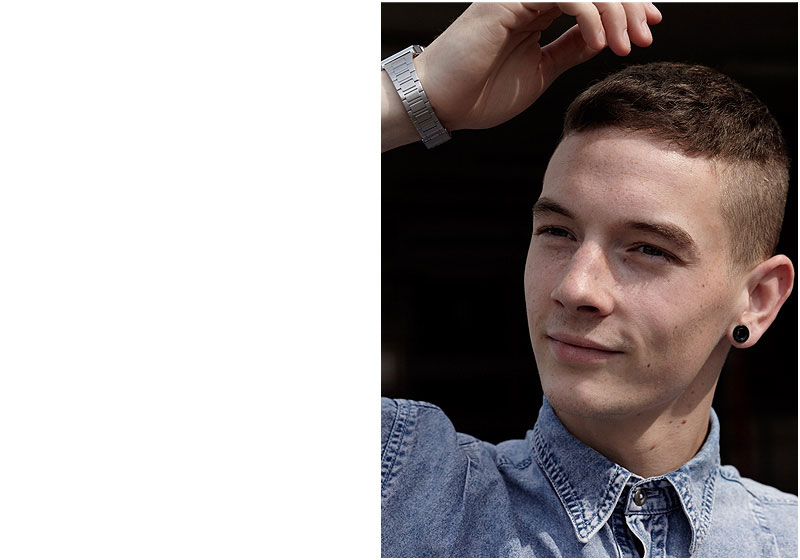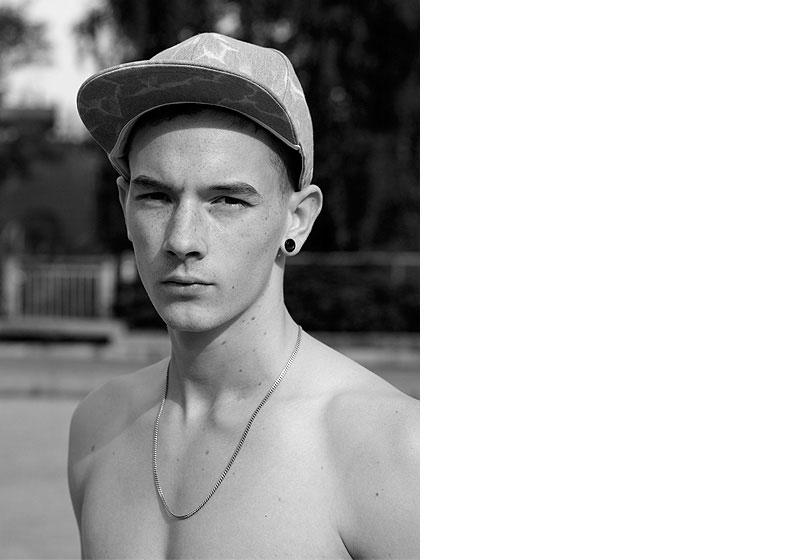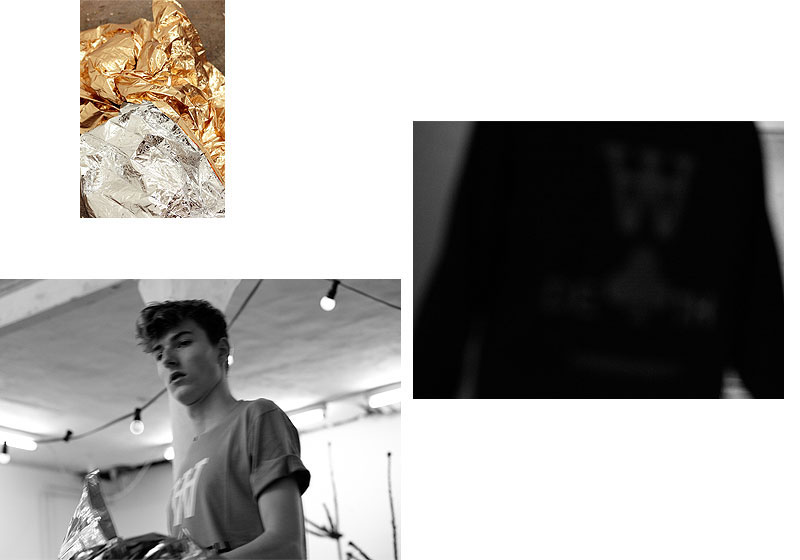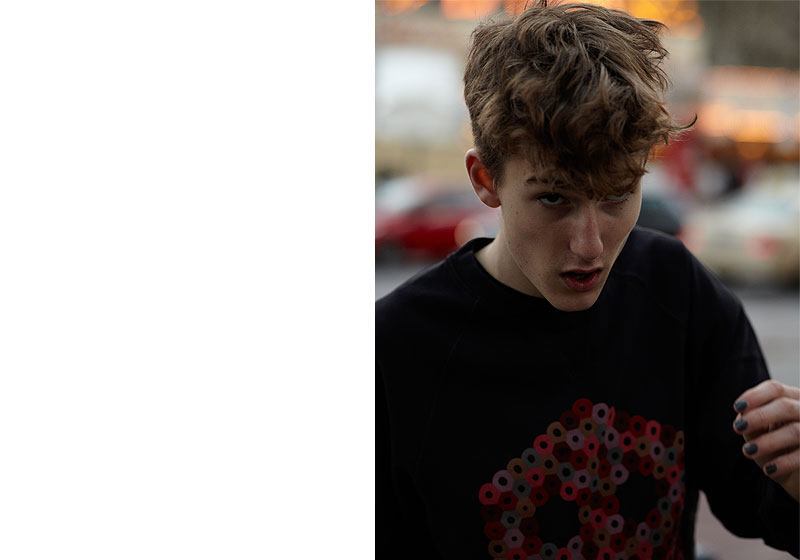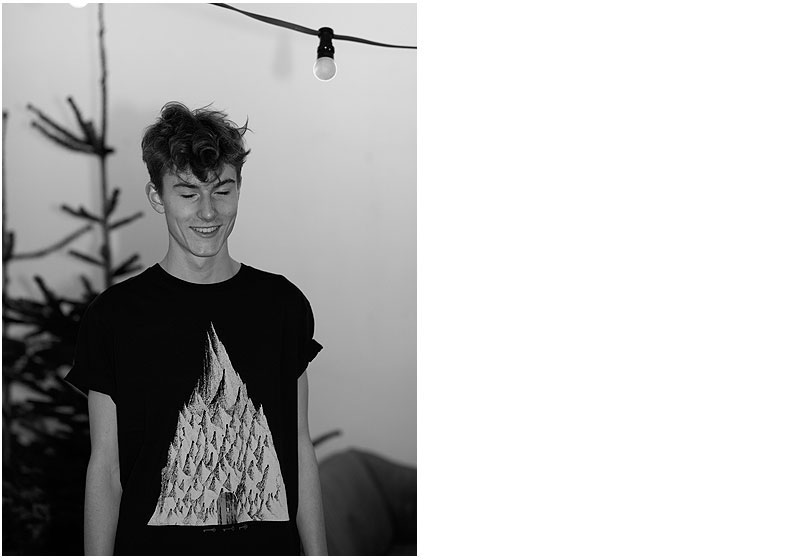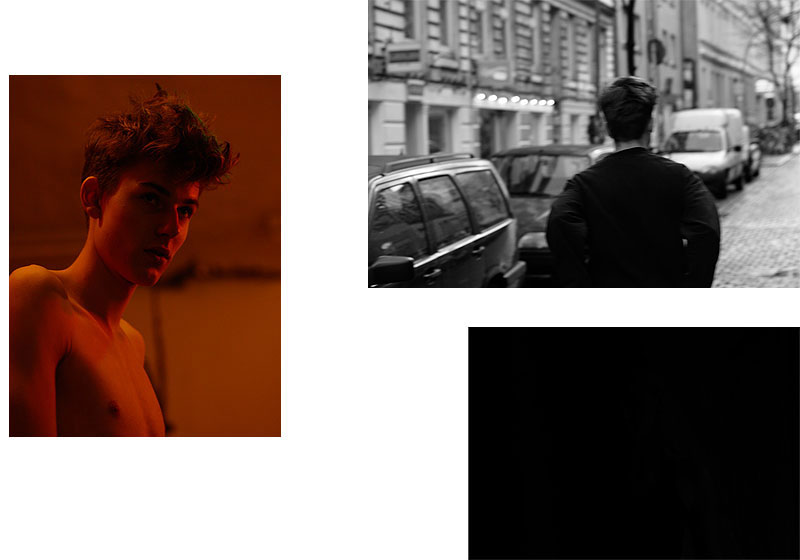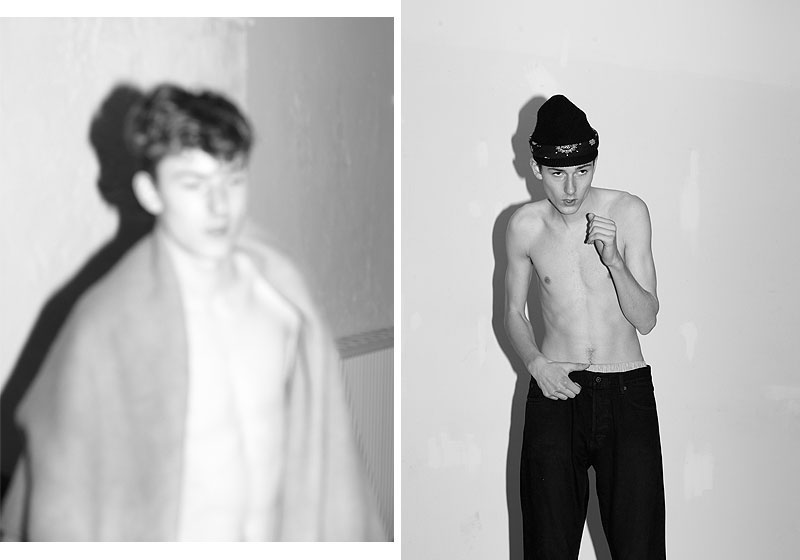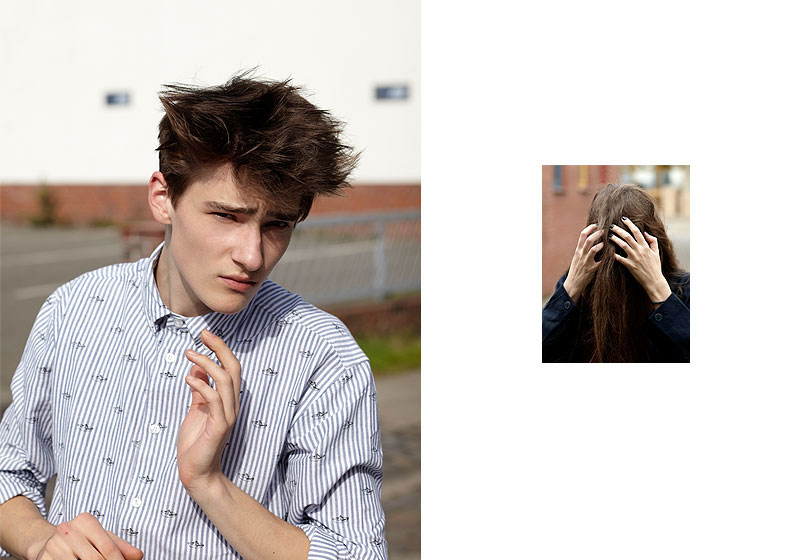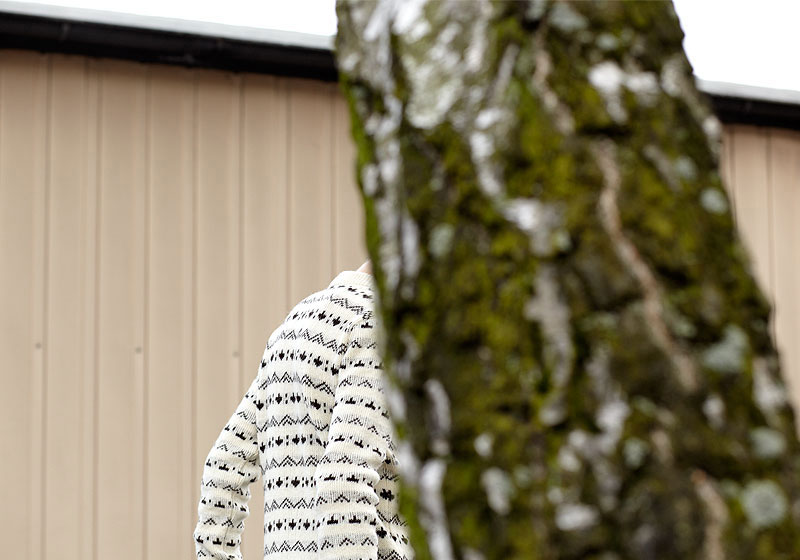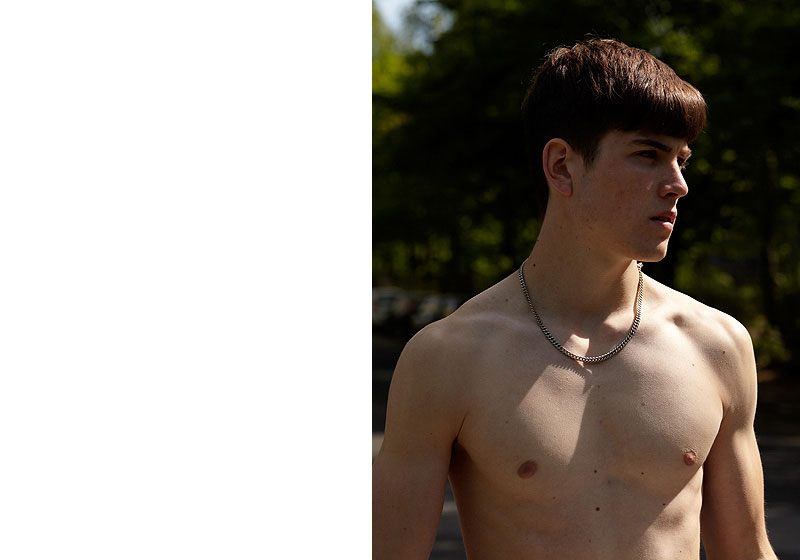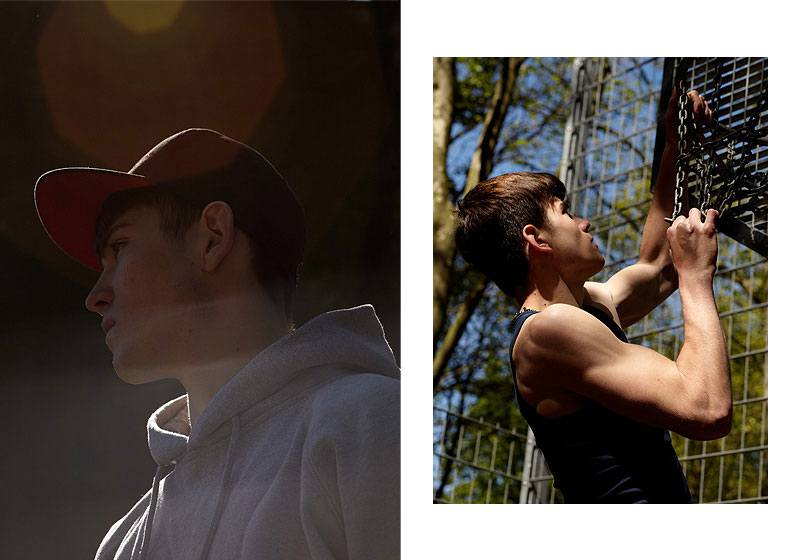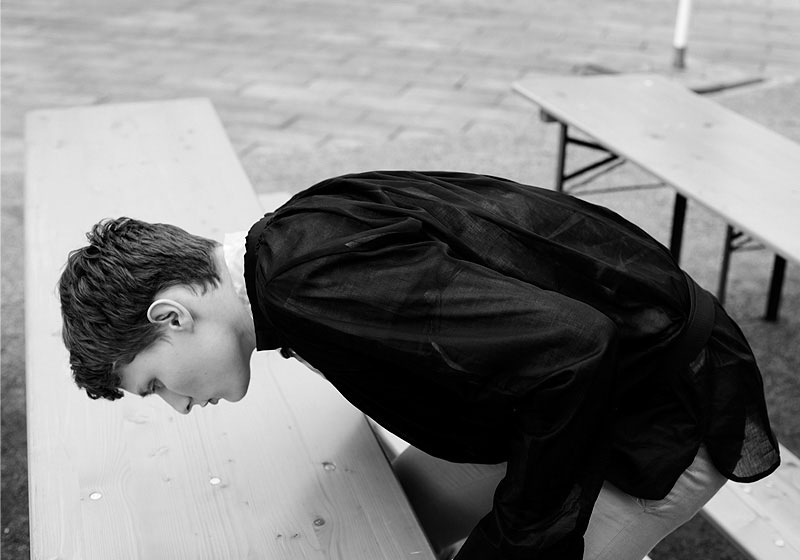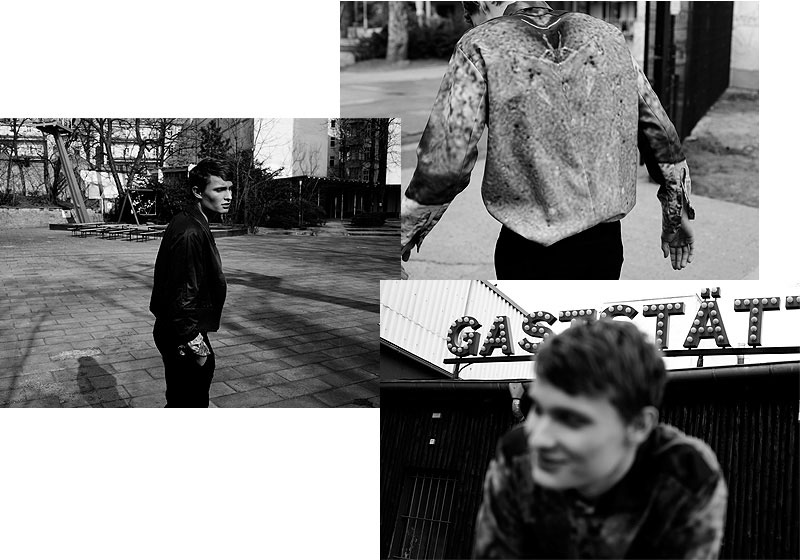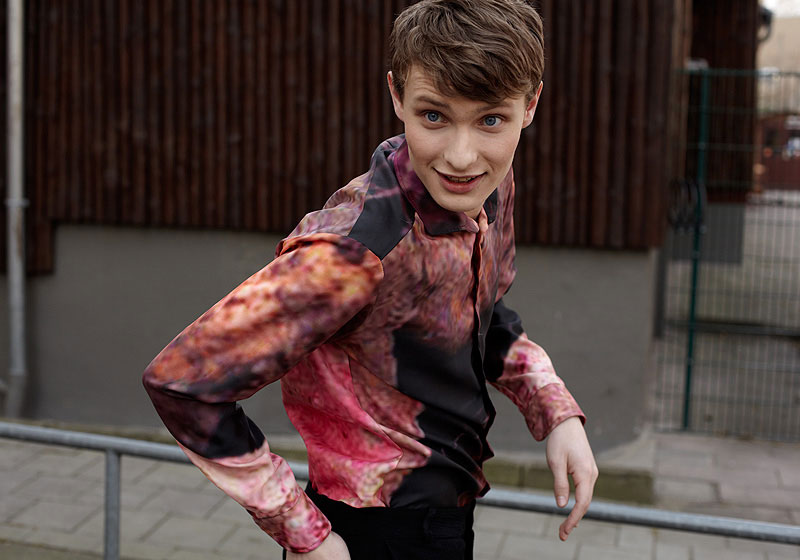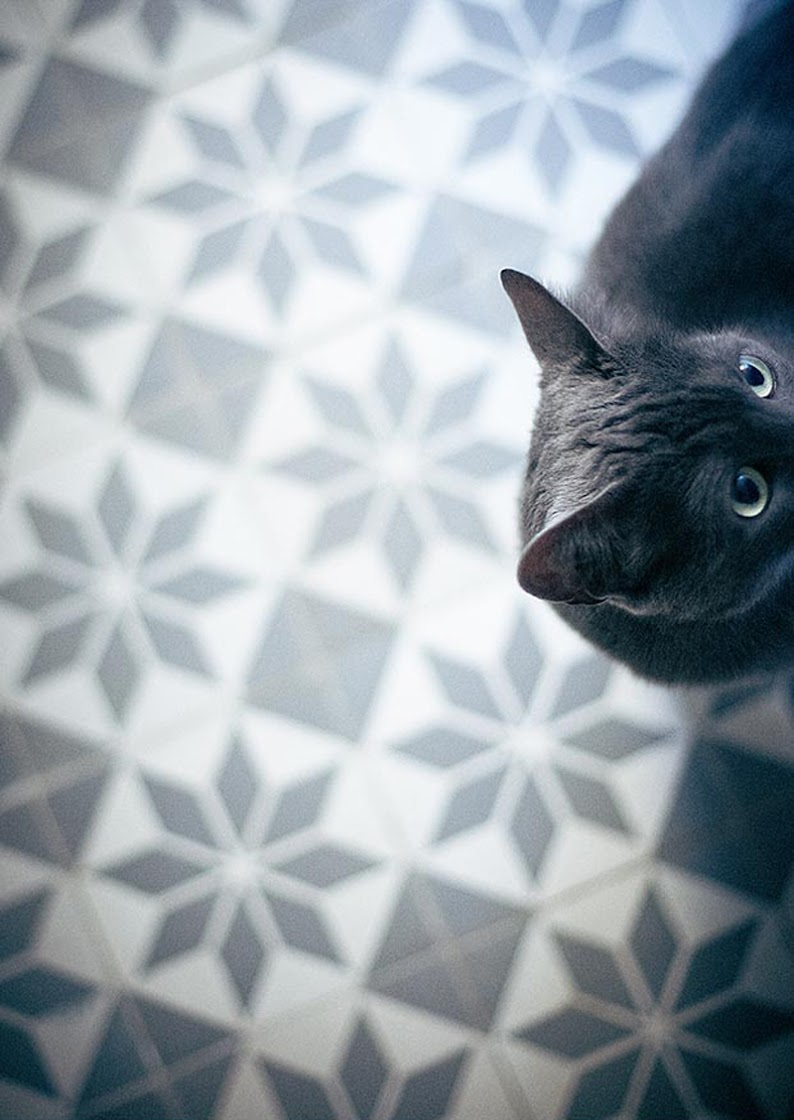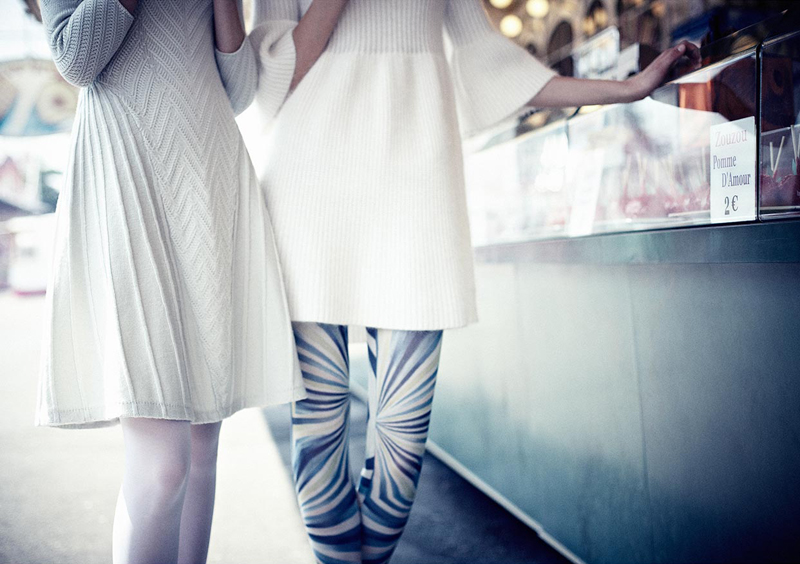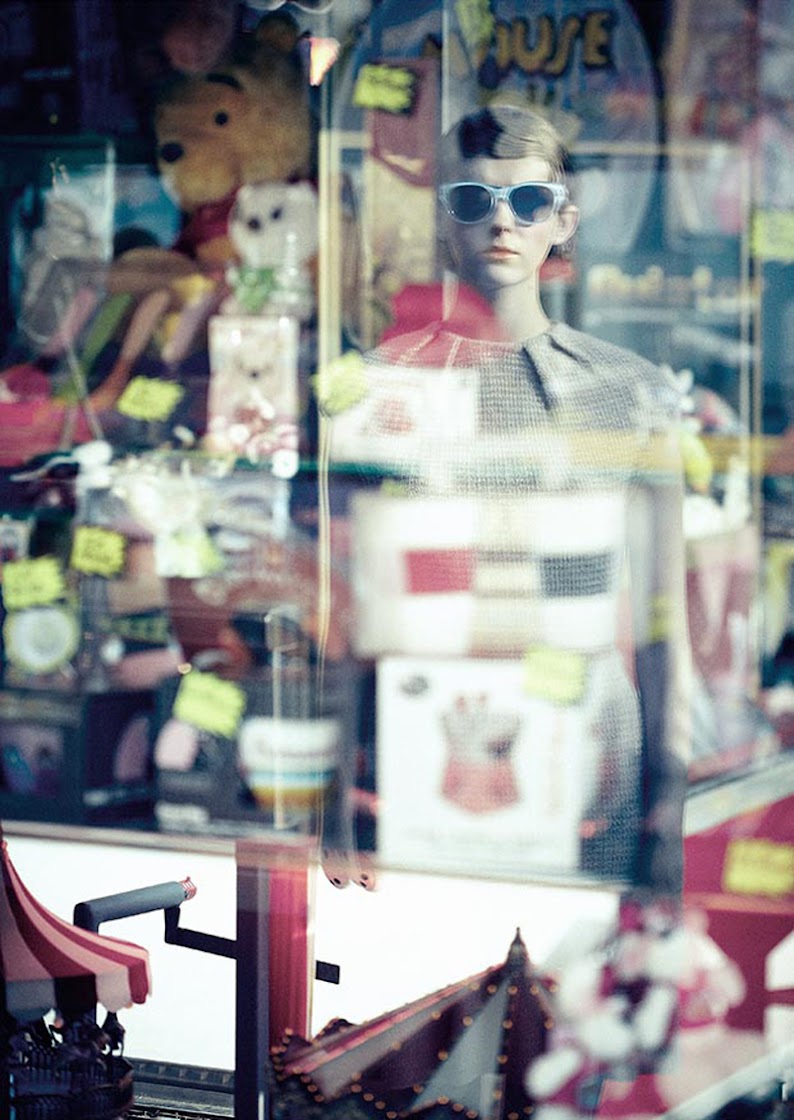Copyright by Jens Kaesemann
JENS KAESEMANN
Merry Wanderer of the Night [Search results for beautiful]
The Beautiful Artwork
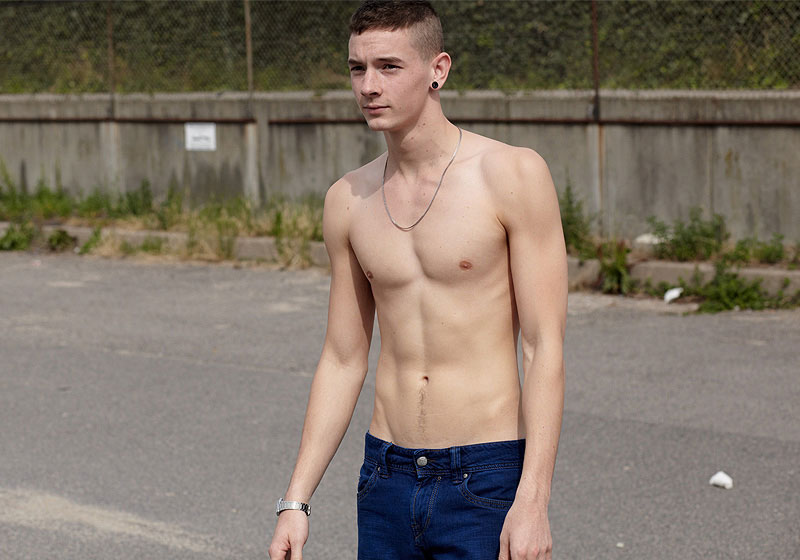
The Beautiful Artwork of Photographer Jens Kaesemann

Copyright by Jens Kaesemann
JENS KAESEMANNThe Beautiful Artwork Of Photographer Oliver Fritze

Copyright by Oliver Fritze | Images from series ›Lea, Clémence, Knut, Petra und Hartmut‹, ›Kino‹ & ›Jahrmarkt‹
Oliver Fritze is a fashion photographer. He lives in Paris, having relocated from his native Germany. (...) He learned much from artists like Ruven Afanador, Dimitri Daniloff and Nick Knight, to whom he owes one of his favorite memories in the studio: shooting an album cover for the Rolling Stones. Fritze considers light an essential part of photography, and he has developed a style tinged with emotion and spirit. Oliver Fritze has won the top prize – the Prix Picto 2012 as part of this years Prix Picto de la Jeune Photographie de Mode.
OLIVER FRITZEThe Beautiful Artwork Of Brian Donnelly Aka Kaws

Copyright by KAWS | CQC
Born in 1974 in New Jersey, Brian Donnelly, professionally known as KAWS graduated with a BFA from the School of Visual Arts in New York. He has recently had solo exhibitions at The Aldrich Museum, Galerie Perrotin in Paris, and Galeria Javier Lopez in Madrid. He has been included in group exhibitions at the Museum of Contemporary Art, Los Angeles, Torrance Art Museum, Orange County Museum of Art, Yerba Buena Arts Center, San Francisco, and the Contemporary Arts Center, Cincinnati. KAWS has upcoming solo exhibitions at the Modern Art Museum of Fort Worth and the High Museum in Atlanta. He has had four monographs published about his work, the most recent in 2010 by Skira/Rizzoli.
KAWSBook Review: Maps and Legends


Michael Chabon's book Maps and Legends: Reading and Writing Along the Borderlands is 1. The most physically beautiful book I have ever read and 2. A manifesto about reading and writing which touts the importance of genre fiction and comic books. So take those last two things and combine them with my undying love of Michael Chabon and you have basically described a perfect book for Ash. I only had to read the first essay about the modern short story and find the following quotation before I really fell in love, "... I would like to propose expanding our definition of entertainment to encompass everything pleasurable that arises from the encounter of an attentive mind with a page of literature" (14). These are ideas that made me start my blog, but Chabon has a way of putting the ideas in my head into beautiful words on a beautiful clean white page in my McSweeney's copy.
The book is a series of essays about books, or reviews, depending on how you read them. He covers Shelock Holmes, The Road, The Golden Compass, and way more. Chabon gushes over is favorite writers, their techniques, their passion. It's a bit like reading blog posts by Chabon, which is exciting because you come away from the book with tons of book suggestions from an amazing author. If Chabon liked it I'm willing to give it a try. Since the book is a series of essay it's not really made to be a sit down and read for a couple hours book, but I read this over winter break and found myself finding excuses to escape and read... a book of essays? Is that even possible. It is my friends. Chabon writes so beautifully about books and connects them to the human experience so well that any bibliophile will drool over the (have I mentioned how beautiful this book is?) cover.
"... a mind is blown when something that you always feared but knew to be impossible turns out to be true; when the world turns out to be far vaster, far more marvelous or malevolent than you ever dreamed; when you get proof that everything is connected to everything else, that everything you know is wrong, that you are both the center of the universe and a tiny speck sailing off it nethermost edge" (93-94).
I just loved this quotation, possibly because I read it right after finals week and was feeling very much like I was sailing off the nethermost edge of my earth. But it is a really good example of how Chabon can work words and make a series of essays something that is incredibly captivating. I'm really not doing it justice, if you love to read you will at least kind of like this book.
And now I have to verbally drool over the cover a little bit. There are three parts to the book jacket, each depicting a different world. The illustrations are beautiful and if you need a break from reading you can always take one of the jackets off the book and explore that world for a little while. You can be entertained by this book without even reading. It's fabulous! The pages are nice thick paper and the most vibrant white I have ever seen in my entire life. Even if you don't like that book that much I'm sure you will squeal with delight just holding it.
I am an Amazon Affiliate. If you make a purchase using one of my links I will earn a small percentage which will then go back into this blog.
The Miracles of Prato


An Italian Carmelite monk, Fra Filippo Lippi, prays through painting in The Miracles of Prato
. He became a monk by chance, but he is an artist in every way. When the beautiful nun Lucrezia Buti enters his life he sees her as the only model he can use to create the Madonna in a very important painting he is struggling with. Lucrezia is also a nun by chance and hates the idea of giving up beautiful silks and dresses simply because she is a nun. Through a shared love of beauty Filippo and Lucrezia bond, but their love is forbidden because they have made a vow to serve God. Both are willing to break this vow, but there are other people and incidents that make the situation that much more difficult.
From the author's note I gather that not much is actually known about Lucrezia Buti or her relationship with Fra Filippo Lippi, but Laurie Albaenese and Laura Morowitz make a very convincing, romantic story about a man and a woman. It was really interesting for me to see how important religion was in art during the Renaissance. Fra Filippo Lippi was a successful artist because he created religious paintings and was a religious man. When Fra Filippo Lippi and Lucrezia move forward with their relationship, Lucrezia is shunned by the people in the town because their relationship is considered to be sinful. The world they lived in was so different from the one that I live in, which gave the story a lot of dimension. The book showed some views of women from the time period, and how a woman's sexual desires were frowned upon while a man's were accepted or ignored, even if he was supposed to abstain from sex.
While I really enjoyed reading about the trials of their relationship and Lucrezia's struggles as a female, I never really felt a strong connection to Lucrezia. When she is forced to become a nun all see is upset about is not having beautiful silks anymore (and the loss of her father, which is why she became a nun, but that isn't gone into with as much thought). It seemed like she wasn't taking control of her life for the majority of the book, although towards the end I felt like she got stronger. I really felt like all I knew about her was that she was beautiful and liked beautiful things. That wasn't enough for me to sympathize with her character, and I struggled with the first half of the book because of that. The second half of the book she begins to grow stronger, and the plot picks up several new strands which make the book more enticing to read. The struggle with Lucrezia's character during the first half of the book was worth the ending for me.
I give this book a C.

For more thoughts about The Miracles of Prato check out the other stops on this tour!
I am an Amazon Affiliate. If you make a purchase using one of my links I will earn a small percentage which will then go back into this blog. Thanks to Trish from TLC Book Tours and Harper Collins for providing me a review copy of this book.
Top Ten Tuesday: Beautiful Book Covers


I do like a nice book cover, but I don't give them nearly as much thought as Jana at the Broke and Bookish so my list won't be as in-depth or interesting as hers. Mine aren't in any order either because I'm just putting them in as I think of them basically.

There were times when I was reading The Swan Thieves by Elizabeth Kostova where I just couldn't help but stop reading and look at the cover. This is truly one of the most beautiful covers I've ever seen. I love the darkness of the background and how the image changes for you as you read the book and find out more about the story. The text is great as well, kind of a mix between old and new, which is something the book plays with a lot. Also, I know this isn't part of the cover and I don't know what the books that have been released look like, but on my ARC the binding is gold and looks quite nice on my shelf.

One of the most effective ways to sell books is probably to have them cover out instead of binding out. If it wasn't for that, I never would have seen The Impostor's Daughter by Laurie Sandell this weekend. I was attracted to this cover because of the bright colors, fun font style, and the mystery about why she's covering her face with a picture of her dad. I picked up the book and read the back cover, thought it looked interesting so I opened it up to find it was a graphic novel! I was really excited to find a graphic novel in memoir form because I loved Persepolis so I bought it right away.

This cover is really simple and white, with a great brightly covered image that totally sums up the message of this book. It looks comicy, but still empowering. This Book is Overdue! How Librarians and Cybrarians Can Save Us All by Marilyn Johnson is probably one of my favorite covers from books I've read this summer. Every time I see the librarian with her cape I smile and I realized something a little different about the picture every time I look at it. For instance, it took me awhile to realize that those were books she was flying out of.

I think part of the reason I read Sunflowers by Sheramy Bundrick was that every time I looked at it I said "Pretty!" I love Sunflowers and Vincent Van Gogh's art and I think it was really effective to do a close up of one painting rather than try to fill the cover with an entire painting. The white text allows the image to speak for itself, and those who know Van Gogh will be immediately attracted just by recognition. Plus I just love green and yellow.

I buy children's books all the time even though I have no children and I'm not a teacher nor do I want to be one. Part of it started when I was a reading tutor and it's just kind of carried on since then. One day I'll have kids to share some of these beautiful children's books with and one I can't wait to share is The Curious Garden by Peter Brown. This was a staff pick at a store once and the artwork is just beautiful. I was attracted by the little red haired boy who sticks out amongst the green and blue of the natural scene behind him.

I still haven't read Eating the Dinosaur by Chuck Klosterman but every time I walk by the cover I get the urge to start it. It is so simple, most of his covers are, but it just looks interesting. The image reminds of a children's reference book about dinosaurs with all of the labels on it. I love dinosaurs so I'm attracted to that. And I like how the author's name and the title are the same size and sandwich the image.

I just had to add one more children's book to this list. Boris and Bella, authored by Carolyn Crimi and illustrated but Gris Grimly is just a great cover. It's Tim Burton-esque and creepy. Normally when you see a male and female name on a book you assume they are in love, but this is not the case with Boris and Bella. We can tell from the image that these ghouls obviously do not like each other. I also like the purple and black for a creepier story like this one, plus the text fits perfectly.

I haven't read Summer at Tiffany by Marjorie Hart yet, but I intend to soon because the book sounds great to me. I love this cover because it combines and simple colorless photograph with a tiffany blue colored box for text, and then the box is topped with a bow like one from Tiffany would be. I just think that was a really cute idea and I love the simple color scheme of this book.

I read this book a week ago and I think it has a pretty neat cover. This cover of Tales of a Female Nomad by Rita Golden Gelman really embodies Rita's personality. The orange and green are bright and fun, which is just like her attitude. I also like the map at the top of the cover that shows all the different places she goes to and how she's constantly traveling back and forth. Plus I like that they used a photograph for a travel narrative because it let's you feel like you're in on their trip a little bit.

My last cover is the 50th Anniversary edition of To Kill a Mockingbird by Harper Lee. It's beautiful. The color scheme is really unique, you don't see that deep, wine red on books very often, and it let's the green of the tree really pop. I have the older lavender version right now and I have been lusting after this book ever since I saw it. I also love the text they use on this cover, a slanted print that looks almost like a child's handwriting.
I actually learned a lot about myself by doing this, I appears that I'm really attracted to colors or white covers with a single image on them. Who knew! What are you attracted to in covers?
Review: Keturah and Lord Death by Martine Leavitt
Keturah and Lord Death by Martine Leavitt is one of the most unique and beautiful stories I have ever read. While not a direct fairy tale retelling, falling more into the category of fairy tale-esque, the book reads like a fairy tale, and elements from different tales and lore find their way into Keturah's story.
Keturah is the storyteller in her small village. She tells tales around the common fire each night, enthralling the townsfolk. There is a hart that haunts the forests around the town, a hart which the Lord of the realm, a renowned hunter himself, has long hunted, but never captured. This hart often finds its way into Keturah's tales, and it is ultimately what leads Keturah into trouble. She sees the hart watching her from the woods one evening and decides to follow it, just a little ways into the wood. As is often in the case with seemingly enchanted harts, Keturah finds herself following the hart deeper and deeper into the wood, unable to stop. When she finally regains her senses, she realizes that she is hopelessly lost in the forest.
After three days of being lost in the woods, Keturah is out of strength, and knows she is going to die. Sure enough, Death comes for her. She is surprised by him, because he appears as a handsome and aloof Lord, and he tells her it is time to go. She begs and pleads for her life, and those of us near death are wont to do, and Death takes pity on the beautiful young girl. He tells Keturah that she may live if she chooses one other from her village to die in her place. But Keturah loves all the people in her village and cannot allow them to die, not even if it means that she might live.
Instead, she asks Death if she might tell him a story. He agrees and she tells him a beautiful and magical story, about life and love, one that sounds familiar, but incomplete. When he demands the ending from Keturah, she refuses to tell it, unless he allows her to live. And so, she makes a deal with Death, returning to her village for three days on a mission to find her true love. If she can find her love in three days, Death will allow her to live. And if not, she must go with him to die.
This is one of my very favorite stories. I love the air of magic within the story, even though there is no magic beyond the meetings with Lord Death. I first read this book a few years ago, and fell completely in love with the characters. Keturah is reckless, fierce, and loyal. Her two best friends are filled with goodness and love. John, the Lord's son is another fascinating character, and you watch him as he desires to fit in among the people and learn to rule them well now that he might be a wise and just ruler when his father rules no more. Even Lord Death is a fascinating character. He is the most powerful force and he knows it. Nothing can stop death, everything must eventually fall to him and yet Keturah tries to defy him. She begs and pleads and offers her stories in exchange for mercy, for life and for time.
I knew that I wanted Keturah and her story to be a part of fairy tale fortnight, because it is simply beautiful and everyone should have a chance to read it. So I decided to reread it before the event, to make sure I did the story justice in my review, and the first thought that came to mine was to Sigh and think, Oh, how I've missed you. This is a story that feels like coming home. It is a tale that perfectly fills those wanting places inside when searching for those magical tales, and it is a story that will never leave you. I think about this book all the time, and I recommend it regularly.
The writing is effortless and vivid. It begins with a prologue that sets the story up with a fairy tale feel, right from the beginning, giving you everything but that actual 'once upon a time' and when the story itself starts, you are already enchanted by her words. You are in Keturah's world, you are living in that village, watching, waiting with bated breath to discover what the future holds for Keturah. Everything feels so very real and you can feel Keturah's pain and panic as her agreement with deal draws to an end and she knows she must soon complete her task or go to her death. She is fighting death for everything she loves or may come to love and it's not always an easy struggle to watch.
This is a story of love, of hope and of almost magic, the kind of magic that we can almost find if we search for it long enough. It is a story of understanding, of personal redemption and finding happiness with what you have. The risks Keturah takes for those she loves are huge and you love her all the more for what she is willing to risk to protect others.
Awesome Essays: Guy Walks into a Bar Car


In general I'm a big fan of The Best American Series and the new one's for 2010 just came out. I bought The Best American Essays
and The Best American Travel Writing
since they are my two favorite collections. I flipped through the table of contents, skimming for essayists I know and love, and new ones I'm interested to read, when I saw that The Best American Travel Writing and The Best American Essays both have an essay by David Sedaris in them. It's the same essay! Guy Walks into a Bar Car, which originally appeared in The New Yorker and can be read online. David Sedaris is known for being funny, so if you're looking for some giggles this is a great essay.
I wasn't vastly impressed by this piece but I think it's worth mentioning since it was chosen by Bill Buford and Christopher Hitchens this year. The essay is about Sedaris' trip on a train. In the bar car he meets a man who he is possibly attracted to, and he gets to talking and drinking with him. The guy is a total wreck, an alcoholic, screwed up family, and unemployed. Later in the essay he talks about a Lebanese man he met on a train some years before (he was 24), he felt an instant connection with this man, and the man invites him to come stay at his college with him, but Sedaris refuses. He later regrets this decision because, well, I think we've all been in that situation before. The essay looks at the train and travel as a kind of hopeful, romantic, new beginning, but then acknowledges that this is often not the case. And even when it is the case, we are often afraid of being truly romantic.
I love the way the essays starts: "In the golden age of American travel, the platforms of train stations were knee-deep in what looked like fog. You see it all the time in black-and-white movies, these low-lying eddies of silver. I always thought it was steams from the engines, but now I wonder if it didn't from cigarettes." This is a great set up for the rest of the essay. Sedaris gives us a well known image, beautiful, foggy, romantic train platforms that are full of mystery and elegance, but then he turns around and says something he has always though as beautiful and enticing might actually just be something gross or unimportant. And this is something I think happens a lot in travel. You dream up a place to be exactly what you want, but once you arrive it isn't anything like you expected. I experienced this when I went to Rome. I thought it would be this beautiful, romantic place, and I ended up thinking it was kind of disgusting.
He further ties this into age. He meets the Lebanese man at 24, but he meets the drunk more recently as an older man. "When you're young, it's easy to believe that such an opportunity will come again, maybe even a better one. Instead of a Lebanese guy in Italy, it might be a Nigerian one in Belgium, or maybe a Pole in Turkey. You tell yourself that if you traveled alone to Europe this summer you could surely do the same thing next year and the year after that. Of course, you don't, though, and the next thing you know you're an aging, unemployed elf, so desperate for love that you spend your evening mooning over a straight alcoholic." So in some ways life is a lot like travel. We enter with expectations, but as time goes on we realize they might not be exactly what we thought.
You can read this essay at The New Yorker, and if you do please come back to tell me what you thought of it!
I am an Amazon Affiliate. If you make a purchase using one of my links I will earn a small percentage which will then go back into this blog.
"Why Contemporary" a guest post from author Lisa Schroeder
Today's guest post is from one of my favorite author people. Lisa Schroeder is seriously one of the nicest authors I've ever spoken to and the fact that I love her writing just makes it all better. She was one of the first authors I thought about when thinking about who to invite for Just Contemporary and I was thrilled when she said yes! So here are her thoughts on Contemporary fiction, why she reads it, and why she writes it.
Why Contemporary:
If you were to ask me my favorite authors, most of them would be contemporary authors. John Green, Sara Zarr, Stephanie Perkins, Sonya Sones, and more. Of course, I love other genres too. Laini Taylor is one of the best authors of our time, and I will read everything she writes because she takes me to amazing places I didn't even know I wanted to go.
But why contemporary? Why am I primarily drawn to the stories about real people dealing with real issues?
I think it's because life can be hard. Like, really freaking hard. And usually, in a contemporary YA novel, we find a character who is struggling with something. And I love watching them go through whatever painful thing it is they're going through, and coming out the other side okay. Maybe even better than okay.
From a young age, I learned life doesn't always go the way you want it to go. People hurt you. People leave you. People tell you one thing, and do another. Contemporary fiction reminds us we aren't alone in dealing with the crap life hands us. Not only that, it shows us that it's possible to make it through, despite the fear and pain and sadness.
My YA novels are very much about teens who have had something bad happen to them.
In I Heart You, You Haunt Me, Ava's boyfriend has been killed in a tragic accident. In Far From You, Alice's mom has died from cancer. In The Day Before, Amber has discovered the family she loves isn't her biological family, and now she has to go and live with people she's never even met.
I've been told my books make people cry. That is probably because life makes me cry. And so, what do I do with that pain? I put it into my stories. I put it there, for other people to experience along with me. But I do it with a purpose. Every character, at the end of my books, has hope.
Because you guys, for me, it's all about that wonderful, beautiful thing called hope.
Isn't it hope that keeps us going? The hope that things will get better. That the pain won't last forever. That a day will come when we look outside and we see more beauty than heartache.
Adult books don't always end on a hopeful note. But books for kids and teens pretty much always do.
That's why I love them. And that's why I'll keep writing them.
***
Lisa Schroeder is the author of numerous books for kids and teens, including her lastest YA novel The Day Before (Simon Pulse) and the MG novel Sprinkles and Secrets (Aladdin). She lives with her husband, two teenage sons, and the cutest pets you've ever seen just outside Portland, Oregon. You can visit her on the web at www.lisaschroederbooks.com.Beautiful post Lisa! And SO well worded!! Guys!! Do you SEE why I love her?! I mean, really!:) And to further prove her awesome, Lisa has been generous to donate a signed copy of Far From You, one of her amazingly beautiful verse novels. Enter below! Ends December 10th US Only MUST leave a MEANINGFUL comment for Lisa, letting her know you read and appreciate her post.
Just Contemporary Week 3 — Contemporary Round Up
There have been so many awesome blog posts about Contemporary YA this week! I have loved reading the ones I've discovered, but just know that I had to have missed a bunch. So, if your blog post isn't listed here, please let me know!
Announcement of Contemporary Win!- A whole bunch of bloggers have gotten together to put on a John Green week this January! How awesome is that?! John Green pretty much oozes Contemporary awesomness so a week to spotlight him sounds awesome! Here is a link to one of the blogs hosting sign ups!:) Click me for John Green Week info!!!
Also, I cannot believe that I have so far forgotten to mention this — BUT — November is also Aussie Month over at Carla's blog, The Crooked Shelf. Since it's Aussie authors in general, not everything is Contemporary but there is definitely some Contemp love and seriously, who doesn't love Aussie authors?! There must be something in the water over there because they Rock!
Some of the Contemporary Australian Awesome — An interview with Melina Marchetta! (Whom I absolutely adore!) Reviews of Graffiti Moon by Cath Crowley; Everything Beautiful by Simmone Howell; A Straight Line to My Heart by Bill Condon; Good Oil by Laura Buzo;REVIEW:
Alissa @ The Grammarian — Before I Fall by Lauren Oliver (not entirely Contemp, but mostly)
Candace @ Candace's Book Blog — Going Too Far by Jennifer Echols (and a giveaway!), The Vinyl Princess by Yvonne Prinz, Dreamland Social Club by Tara Atebrando, Girl Wonder by Alexa Martin and Shattered Soul by Jennifer Snyder (also has an author interview and a giveaway!).
Somer @ A Bird's Eye View — Perfect Chemistry by Simone Elkeles
Mandie Baxter — Jellicoe Road by Melina Marchetta
Allison @ The Allure of Books — Jellicoe Road by Melina Marchetta
Mary @ Anxirium — Five Flavors of Dumb by Antony John
Jacinda @ The Reading Housewives — Sea by Heidi R. Kling and The Running Dream by Wendelin Van Draanen
The Busy Bibliophile — You Against Me by Jenny Downham
Jennifer @ The Book Barbies — Virtuosity by Jessica Martinez
Racquel @ The Book Barbies — If I Stay by Gayle Forman, Where She Went by Gayle Forman, Ten Things We Did (and Probably Shouldn't Have) by Sarah Mlynowski and Virtuosity by Jessica Martinez.
Magan @ Rather Be Reading — Cracked Up to Be by Courtney Summers and The Perks of Being a Wallflower by Stephen Chboksy
Krazy Book Lady — Joint Mother/Daughter review of Geek Girl by Cindy C. Bennet
Estelle @ Rather Be Reading — Fringe Girl by Valerie Frankel
Katelyn @ Katelyn's Blog — Lola and the Boy Next Door by Stephanie Perkins
Amanda @ Book Love 101 — Lola and the Boy Next Door by Stephanie Perkins
Hannah @ Paperback Treasures — Anna and the French Kiss by Stephanie Perkins
Bonnie @ A Backwards Story — Lola and the Boy Next Door by Stephanie Perkins
Rachel @ Rachel Reads — The Sky is Everywhere by Jandy Nelson
Ginger @ Greads! — Graffiti Moon by Cath Crowley
Farrah @ I Eat Words — Graffiti Moon by Cath Crowley
Amanda @ On a Book Bender — Cut by Patricia McCormick (guest review by Amanda)
Karen @ For What It's Worth — Saving June by Hannah Harrington
A Beautiful Madness — Dancergirl by Carol Tanzman, Uncommon Criminals by Ally Carter (second in a series) and Saving June by Hannah Harrington.
Ashley @ Book Labyrinth — I'm Not Her by Janet Gurtler
Laura @ The Reading Nook — Lie by Caroline Bock
Jamie @ Writers write, right? — The Boys Next Door by Jennifer Echols
Rachel @ Fiktshun — Where You Are by Tammara Webber (second book in series)
Melissa @ I Swim for Oceans — The Shattering by Karen Healy
April @ Good Books & Good Wine — Playground by 50 Cent and Sweethearts by Sara Zarr
Jamie @ The Perpetual Page Turner — Will Grayson, Will Grayson by John Green & David Levithan
Anna @ Anna Reads — Kiss It by Erin Downing and Virtuosity by Jessica Martinez
Jayme @ The Secret Life of an Avid Reader — Withering Tights by Louise Rennison
Yani @ The Secret Life of an Avid Reader — Double Clutch by Elizabeth Reinhardt
Chey @ The Hollow Cupboards — Anna and the French Kiss by Stephanie Perkins and Ten Things We Did (and Probably Shouldn't Have) by Sarah Mlynowski
Juhina @ Maji Bookshelf — North of Beautiful by Justina Chen Headley, Dancergirl by Carol Tanzman and Where You Are by Tammara Webber (second book in series)
Farah @ Maji Bookshelf — The Earth, My Butt, and Other Big Round Things by Carolyn Mackler and Saving June by Hannah Harrington
Chelsey @ Starry Sky Books — Rhymes with Cupid by Anna Humphrey
Melissa @ This is Your Brain on Books — The Perks of Being a Wallflower by Stephen Chbosky and Beauty Queens by Libba Bray
Mari @ Escape in a Good Book — All I Ever Wanted by Vikki Wakefield
Nina @ Escape in a Good Book — Dancergirl by Carol Tanzman
Sarah @ Whispering Words — Guitar Girl by Sarra Manning
Cass @ Words on Paper — Audition by Stasia Kehoe
Samual @ Books for All Seasons — Moving Day by Meg Cabot
Lena @ Addicted to Novels — Love and Leftovers by Sarah Tregay and Saving June by Hannah Harrington
Steph @ Steph Su Reads — Saving June by Hannah Harrington
Giselle @ Xpresso Reads — Fury by Shirley Marr
The Book Faery — Deadly Cool by Gemma Halliday
Tee @ Dreaming Dreams — Anna and the French Kiss by Stephanie Perkins, Lola and the Boy Next Door by Stephanie Perkins, Dash and Lily's Book of Dares by David Levithan and Rachel Cohn, and Deadly Cool by Gemma Halliday.
Lizz @ Dreaming Dreams — Want to Go Private? by Sarah Darer Littman
Annette's Book Spot — Saving June by Hannah Harrington
AUTHOR:
Mary @ Anxirium — Guest post w/ author Jennifer Castle about Being a Contemporary YA Writer
Candace @ Candace's Book Blog interviewed Tara Altebrando.
Krazy Book Lady interviewed Cindy C. Bennett
Avid Reader Yani has a guest post from Elizabeth Reinhardt about dating
Kody Keplinger interviewed Hannah Harrington
Kirsten Hubbard is giving away Wanderlove bookmarks
Hannah Harrington lists her Top Ten Road Trip Songs.
DISCUSSION:
Misty @ The Book Rat talks about her most anticipated Contemporary YA (and it's a linky! You can too!!)
Molly Jo @ Surrounded by Words — Contemporary YA: A Love/Hate Relationship
Danielle @ Alpha Reader talks about her favorite Aussie YA novels.
Samual @ Books for All Seasons talks about favorite YA/MG Contemps about friendshipRomance:
Bonnie @ A Backwards Story
Danya @ A Tapestry of WordsMore of the Tough Stuff posts that I missed last week:
Candace @ Candace's Book Blog
Bonnie @ A Backwards Story
Sarah @ The Storybound Girl
Amanda @ The Fiction FairyOnce again — If I've missed anything, Let me know!!:) I'd love to add your stuff to my link up!
Just Contemporary — A love tribute to Jellicoe Road
I'm not exactly quite about the fact that Jellicoe Road by Melina Marchetta is one of my absolute, all-time favorite books. I love it. I treasure it. I recommend it so often that people who know me don't even need a title to know which book I'm talking about. I love it. Seriously. There are not enough words to truly describe how much I love this book. I wanted to reread it before I review it, so that I can truly do justice to the story, but I also wanted to set up some quotes from people I know (many of whom I pushed the book on) who love Jellicoe Road as well and let you read a paragraph from each of these awesome bloggers expressing their love and affection for the masterpiece that is Jellicoe Road.
Audrey @ Holes in My Brain
I could honestly sing praises for Jellicoe Road all day and never run out of things to say, but since I don't have that type of time, we can just get to the crux of the novel and what makes it magical: the characters that Marchetta found a way to bring to life. Through masterful storytelling and absolutely flawless prose, I fell in love with Taylor and Jonah and Narnie and Jude and every single other unforgettable, beautiful, and painfully real character. And sometimes the characters are all I need to fall in love, but luckily enough, Jellicoe Road also comes with an intricate plot and the best tortured love interest in Young Adult literature. Seriously.
Katelyn @ Katelyn's Blog
I love Jellicoe Road for many reasons. The characters, each and every one of them, are extraordinary to me. The two stories told through this one book, touch a special place in my heart. I love the school, the town, and the friendships that are created. I love that this book brought happy tears to my eyes. I love that I can recommend this book to EVERYONE with the upmost confidence that once they finish it, they will love it. I love that this whole story was work. I was constantly piecing it together in my head and at the end of the book, it all came together seamlessly. Most importantly, I love it because it is the epitome of what every great Contemporary Fiction book should have: a brilliant cast of characters, a vivid setting, and a story that steals your heart.
Asheley @ Into the Hall of Books
I love an excellent story that is driven by incredible characters, and that is exactly what Jellicoe Road is. It is so beautifully well-written that when I finished the book, I felt like I had been inside of the book, living and breathing the story on its pages. There are very few times in my life that I have been so wrecked by the lives of a group of characters, and this is one example that will stay with me probably forever. It is truly one of the best books I've ever read.
Jacinda @ The Reading Housewives
Melina Marchetta has a way of turning a young adult novel about a character into being more than just about that one character, but about many. She brings adult characters into the storyline who still need to grow, change, and learn. They aren’t just someone’s parents or disciplinarians or elders in her books, but people with problems. Jellicoe Road is so in-depth many people, including myself, are totally confused for the first 100 pages, but I assure you, after those pages, you will be amazed!
Misty @ The Book Rat
I think it's pretty clear to anyone who reads Jellicoe Road that it's an amazing story — the understanding of human nature and emotion, the ambiance to the book, and the way it all unfolds, the past and present fitting together like a puzzle. But what really took my breath away is how a story can deal with such tragedy that the weight of it just shatters you, and yet still be written with hope. That was the feeling I was left with, and it was beautiful.
Alexa @ Collections
I didn't even know books could take you to a whole other level, until I read Jellicoe Road. It seriously blew my mind. I actually feel hurt when someone doesn't love it because to me, it's the most amazing book in the world. I absolutely loved everything about it, and I can already see myself reading it again and again for years to come.
Aren't they all BRILLIANT?! Seriously. Thank you all, SO much for writing to tell me, and thereby sharing with everyone your love for this amazing book. And all I can say to you is yes. YES. That. All of the above. LOVE. You are brilliant ladies and I thank you.If you haven't read Jellicoe Road, we should chat. It's amazing and beautiful and heartwrenching and soul tearing and uplifting and building and brilliant. It is about as close to perfection as any novel I've ever seen and I love it.
Review: Tithe by Holly Black & How Fairy Tales Adapt
A very warm welcome now to Ammy Belle who has a great post for us today about How to Find Pixies in New Jersey. Not sure what them means? Then read on!!
And, don't forget to check out Ammy's first guest post over at The Book Rat about Tender Morsels!
~*~*~*~*~*~*~*~*~*~*~*~
I suppose in some way, everyone thinks of the princess in the castle or the knight in shining armour when they think of fairy tales: your mind becomes awash in the grandeur of the Disney fairy tale – the white walls of a palace, the beautiful silhouettes of the old dresses, the magic of a time that caught somewhere in the fold of history we have yet to discover.
But the real magic of fairy tales is that they can adapt – and adapt well – to pretty much anything. The reason for this, is the plain fact that fairy tales are just moral tales – they are stories you tell people to warn them about life (especially the original ones, the ones I like to call dark fairy tales). Essentially, these modern fairy tales take the original magnetism of the stories from the olden days and attempt to fit them into some modern city or town.
Lately there has been a little bit of a trend on adapting fairy tales: one such series is the Tithe series by Holly Black. In this series (I have only read the first book, but my understanding is that the first is the best example of modern times and fairy tale) we are dropped into a fairy war, where dark fairy tales meet the New Jersey shoreline. It ‘s through the realm of faerie that Black creates, the use of iron as the boundaries between human and faerie, and the manipulation of the changeling narrative from old stories, that makes Tithe a modern faerie tale.
Kaye is our heroine. She’s a blonde haired, green eyed girl with almond shaped eyes and is pretty small for her age. She lives a nomadic lifestyle with her Mom, who sings for a series of bands. Her father isn’t in the picture, but when her mother’s boyfriend attempts to stab her, they pick up and move back to their home in New Jersey – to live with Kaye’s older, stricter grandmother, in her home near the seashore and the woods, where Kaye had imaginary friends growing up. The imaginary friends, are of course, faeries of different types, and they “play” along a little creek near her house. Little does Kaye know, they have been fighting a strange war for her whole life.
Tithe is a real faerie story – in the sense that, it has faeries. Like Tir Na Nog. In fact, very much like that: in the original faerie stories, faeries were not like Tinker Bell – they were actually untrustworthy. They guarded their own possessions jealously, and killed anyone who came at them from any which way. Faeries are manipulative and care very little for humans – and sometimes they are beautiful, but often they are gnarled and misshapen creatures that have a very scary sense of humour.
Black doesn’t hold back – she makes her story gritty and realistic, with a caffeine-addicted, chain smoking, strong willed protagonist, and her dismal nomadic background. Her friends are few and far between, and filled with jealousies. Her life is dangerous, but she doesn’t realize it, and coming back to New Jersey makes it that much worse: there in the industrial dotted river side, there lives a kelpie – a sea horse that collects young drowned girls. Black entwines the old with the new – mixing the harsh and lonely world of the kelpie, with the paint chipped world of the New Jersey boardwalk. It’s an amazing comparison, and the best example of it is when the kelpie and Kaye strike a bargain: for his boon, he requests the dilapidated old carousel horse to keep him company in the deep. This juxtaposition of old and new, on top of the contrasted faerie and human world, creates a blanket of intrigue that almost shows a compassionate side of Kaye’s world.
Such is the case with iron in Tithe: the faeries are cruel and out for themselves, their desires – whether they are actually good or bad – come before anything else – but they are nature, they represent a basic form of nature, that can be cruel and yet very vulnerable. This tension works within the New Jersey city limits – or at least, the New Jersey that Black paints for us – this urban wasteland where the shoreline is wasting away, and nature seems on the verge of making a comeback, as the water and grasses start taking over the boardwalk. Iron represents this hardline though, the thing that faeries cannot survive – they can be wild and dangerous – but put them in a car, and they’re toast.
I think that iron is an interesting choice for this. In an age where we see digital media and electricity and such as such big themes (see Steampunk), I think a return to iron is both interesting... and it makes sense – I mean, what do we have that isn’t made of iron? The whole human world seems to be a death trap for faeries, and in turn, the faeries are harsh and cruel – and they have weapons. Instead of guns, they have swords, but it works in the totality – the adaptation to the New Jersey shoreline works with the iron, the totality of the dangers for each world is balanced so well, it is almost as if New Jersey itself is a magical place.
Finally, there is the changeling aspect of the story: the changeling narrative is an old faerie tale, where faeries will steal into a nursery and switch a newborn baby with an old, dying – but veiled – faerie. There actually is no real reason, I think... or at least I have never found a common theme for all of it – though each story has its own unique spin. Tithe gives its faeries a reason for the changeling, but it changes the rules – the changeling doesn’t die, instead, the changeling becomes the story. The main viewpoint is through the lens of someone who does not quite belong and at the same time, is pivotal to everything that happens. The reason this works for the modern fairy tale, is the fact that it basically reminds us all of our awkward teenage years when we were confused about how the world fit together, but deep down inside, we knew we were special.
In the end, this is what why the modern fairy tale works – it pulls out the comparisons between the old and the new, and draws a line between these worlds... and then allows the characters to hop scotch between the lines, in order to draw the reader in. It works because we want the magic, and we recognize the setting – much like a dystopian, where the parameters of what we understand become hazy and fluxuate so that we can imagine ourselves in different situations.
Tithe was a great read, and I cannot wait for the next two instalments – not only because of weird way New Jersey becomes more magical, but also because the main love interest, Roiben – he’s awe-inspiring.
Anyways, that is my take on modern fairy tales and Tithe – go check it out, and keep reading those fairy tales – they can adapt to pretty much anything – can’t wait to see a cyberpunk fairy tale set in the future...
Awesome Essays: First


This is my first edition of a post I hope will go on for quite awhile, and one that all of you might be able to get something out of. When I first started this blog I was kind of pulling away from something that I really, really love. The essay. This summer I have taken a strong return back to my old favorite and now I'm hoping to talk about one essay I love every week. To start us off I decided to go with First by Ryan Van Meter which originally appeared in the Gettysburg Review, but I read it in The Best American Essays 2009. If the anthology is any actual gage of the best American essays published in 2009 then I would argue that this is actually the best essay, because I've returned to it about six times in two weeks and every time I grow to love it more. It's the only essay from the anthology that has left such a huge mark on me. And I didn't even know this until exactly this moment, but apparently he teaches at the University of Iowa (my school!). I honestly didn't know this, I don't want you all to think I'm biased or something.
This essay is the story of a five-year-old boy's thoughts on love, which he gains from watching soap operas with his mother during the summer. "What I enjoyed most about soap operas was how exciting and beautiful life was. Every lady was pretty and had wonderful hair, and all the men had dark eyes and big teeth and faces as strong as bricks..." (178). He believes that love is possible and beautiful and wonderful, and he believes that he is in love with his best friend who is possibly named Ben (being that he was five at the time, it's a little difficult to recall). "What I know for certain right now is that I love him, and I need to tell him this fact before we return to our separate houses, next door to each other" (177). They are riding backwards in the back of a car, with their dads sitting in the front seat together and the moms in the back. One of my favorite observations in the essay is "that when mothers and fathers are in the car together, the dad always drives" (178).
By the end of the essay young Ryan has proposed to Ben, only to be told by his mother that this is not okay. This shatters everything he knows or thought he knew about love, and with it some of his hope is also lost. This, of course, deals with homosexuality and the acceptance of it, even within your own family. I think this essay really transcends that though. To me it's more about growing up and learning that what you think as a child may not actually be how the world works. I was just thinking about how as a child death would happen in stories, but I never gave much thought to it. Now I'm obsessed with death in children's stories and how children react to it. Beyond the message of this story, it is beautifully written. I can see everything happening with such precision, it reads like a dream. One great example is right after Ben and Ryan let go of hands and he says, "I close my fingers into a loose fist and rub my palm to feel, and keep feeling, how strange his skin has made mine" (179).
This is by far my favorite essay I've read this year and if you'd like to read it you don't even need to get The Best American Essays 2009 (in fact, I'd probably skip it since I wasn't overly impressed by the collection as a whole, more on that later). You can check out this essay at The Gettysburg Review. It's very short, just three pages printed and I obviously think it's worth a read and reread. Ryan Van Meter also has an essay collection coming out April 2011 entitled If You Knew Then What I Know Now. I wait with baited breath.
I am an Amazon Affiliate. If you make a purchase using one of my links I will earn a small percentage which will then go back into this blog.
Tarnished Beauty by Cecilia Samartin


Jamilet is a beautiful young woman from a small town in Mexico. Throughout her life she has been shunned by local townspeople because of a horrible birthmark that taints her back and part of her legs.She flees to Los Angeles illegally in order to seek treatment for her birthmark and begins working at a local mental institution. Her patient is an elderly man named Antonio, a difficult and angry man from Spain. Antonio insists that his true name is Señor Peregrino. Antonio steals Jamilet's illegal immigration documents and promises to return them upon the condition that she listens to his story. Jamilet agrees, and thus begins an unbreakable bond.
Antonio’s story details his pilgrimage to the Cathedral of Santiago in Spain with his friend Tomas prior to joining the priesthood. The young men meet two young women: Rosa, a beautiful but destitute woman and Jenny, a plain but wealthy woman. Both Antonio and Tomas instantly fall in love with Rosa. Antonio and Rosa promise to get married once they reach Santiago. Upon arrival, Antonio learns from Jenny that Rosa has instead married Tomas. Antonio marries Jenny, but doesn’t learn the truth about Rosa until years later. He is so pained by the revelation that he isolates himself in his room at the institution.
Inspired by Antonio’s story, Jamilet learns that her mark does not define her as a person. Beauty is more than skin deep. She breaks herself free of the shell that has been preventing her from opening up and allowing herself to love.
The ending of the story was a bit sudden; several aspects were left hanging, but this doesn't detract from the powerful storytelling.Sunday Salon: The Return of the Backpacker
Hello blogging world! I am officially back in my own house in Iowa City. I'm still not freshened up from my trip, there is laundry and unpacking to do, but I couldn't wait another day to write a blog post. I had every intention of posting more while I was absent, but if I'm being totally honest I loved the break from blogging. I think I really needed it. And now I'm back to bombard with you with pictures from my trip. Jason and I hit up four countries and five cities in seventeen days. It was crazy.
We landed in Amsterdam first, and that was the only place I blogged from. It was also my favorite place we visited. I loved biking around the city and how Amsterdam is a city yet really feels more like a small town.
Favorite Amsterdam moment: Absolutely everything was closed on New Year's Day, so we ended up renting bikes and just riding around all day. It was frustrating at the time because none of our plans worked out, but now that I know we got to do everything we wanted (pretty much) I look back on that day with a great fondness.
From Amsterdam we took a short day trip to Brussels where there is a comic strip museum. Count me excited! Brussels also has a ton of amazing food and was probably the best food we had over the course of our trip.
Favorite Brussels moment: My mouth is still watering over the mulled wine and scalloped potatoes with ham and cheese. What a delicious snack. The comic strip museum was a lot of fun as well, although their gift shop was a huge letdown. Their English selection was one shelf. So yeah, the food wins.
Our next stop was Berlin, which is must say is one of the strangest cities I have ever visited. There is so much street art and punk culture there, which I really loved, but I found that the people were very abrupt. Not rude, just a little harsh. The way Berlin exists today is also about as old as I am, which was weird. You can really see the history of WWII and Communism there, which only makes the city feel harsher.
Favorite Berlin moment: I really loved this particular section of the Berlin Wall, but it's not my favorite moment. I'd have to say the best thing we did in Berlin was visit this bar called Kaufbar. You could buy the vintage furniture in there and they played awesome music. It was a very relaxing environment and felt more like a normal coffeeshop in the United States than a bar.
We took a day trip to Prague from Berlin. All we really had time for was a tour of the city and then some time at bars that evening. This is where we met one thousand Australians because they are all on summer holiday right now. I've met one Australian my whole life and I go to Europe and meet all of them. Crazy.
Favorite Prague moment: We stayed a night in Prague and after having a crazy day where we tried to see everything it was really nice to wake up the next morning and just wander around. Prague is a really beautiful place and the train ride there was even more beautiful.
Our final stop was Munich. We were getting fairly tired at this point but we still did quite a bit. We visited Hofbrauhaus, Dachau, Neuschwanstein, and did some shopping. They love their beer in Munich, so it was a pretty fun place to turn 21 for an American.
Favorite Munich moment: Even though it's not in Munich, the best day we had was my birthday (at least I think it was the best day). I was super hungover but visiting Neuschwanstein was so much fun. Pictures really don't do justice to the beauty of the snow covered forest on the walk up to the castle. It was a fairy tale birthday.
So that's my trip in a tiny nutshell. I had an amazing time and got just the break I needed. Jason and I are already talking about where we want to visit next!
I am an Amazon Affiliate. If you make a purchase using one of my links I will earn a small percentage which will then go back into this blog.
Autor Guest Post: Katherine Center, Author of Everyone is Beautiful

Everyone Is Beautiful is about a mom with three boys under four who decides to get her groove back.In the process, she learns an important thing: A good groove is hard to find. Especially for moms.It’s so easy to judge your parents, when you’re young: all the things they didn’t do for you, all the ways they let you down. It’s so easy to feel indignant and insist that you would have done a better job.
And then you become a parent yourself. And somewhere in those early years with kids—maybe on the day your toddler flushes your new silk scarf down the toilet—you come to understand something important: That your parents were just doing the best they could. And that as the years of your childhood were ticking past, your parents’ years were ticking, too.
By the time I was ten, my mother was forty. She didn’t press pause on her life to raise me and my sisters. Those years were happening all at the same time. My childhood was her thirties. She was raising us, but she was also, from time to time, doing a thing or two for herself. Now that I myself am a mom in my thirties, that strikes me as perfectly fair.
But it’s tricky for women to think about their own interests while raising little kids. It feels selfish. In the abstract, giving everything you have to the project of childrearing makes a lot of sense. But in particular, those minutes are your minutes, too.
It shouldn’t be that hard to do both: your kids’ minutes and your own. The two are connected, after all. Your children aren’t you, but they come from you, and you’re just as invested in their well-being as in your own. If not more so. But doing both—as always—is harder than it sounds. “A few years” is a long time. Right? We don’t have all that many years on this planet. And they skip by faster and faster.
And your own interests are looking for you. They find you in dreams. In the carpool line. In the bookstore. In moments of frustration. They don’t leave you alone.You can ignore them for a long time, if you want to. In some ways, that’s easier. Figuring out how to take good enough care of everybody—including yourself—is a recipe for frustration.
But some nights, no matter what you’ve decided to do, you’ll find yourself awake at three in the morning, Googling pottery wheels on Craigslist, or writing a poem, or reading old letters. The next morning, your eyes will be puffy and you’ll wake up with a sense of panic about how you can make it through the day on so little sleep. And you might lose your car keys. Or forget to put your daughter’s snack in her backpack. Or forget your son’s costume for the school carnival.
You might hear yourself cursing those stolen hours from the night before. But you’ll hear something else, too: the memory of who you used to be lifting itself up, singing its own song out of a crackly jukebox across a crowded room.You can barely hear the song. But it’s there. And what’s more: You still know every word.
The Bell Jar


I purchased The Bell Jar when I was in ninth grade and boy am I glad I didn't try to read it then. I'm also glad I didn't try to read it three years late when it was on my list of books to read at 17. And I'm also glad I didn't try to read it the next year when I was 18. Because, friends, 20 is the perfect age to read The Bell Jar. At least it was for me. At 14, 17, and even 18 I know I would have read The Bell Jar in a very different way then how I read it on the plane back from New York a week ago. I just don't think I would have had a) the emotional maturity to understand Esther Greenwood or b) the background knowledge of the time period to kind of get what was going on here.
The book reminded me so much of conversations with friends my freshman year of college. Conversations about feeling so trapped, as Esther is, by pregnancy and motherhood, or what we should do. But I feel this book has new sort of resonance now. Women have so many options now that I feel like it becomes a horrible thing if you do want to stay at home and be a mother. Where is the line drawn? Can you be a feminist and be a stay-at-home mom? In my opinion, you can, but that is a conversation you can have with me a coffee shop sometime.
Esther's journey through the novel is terrifying and beautiful. Terrifying because her fall to depression and insanity is so rational, so clear. She is thinking so clearly, that it could happen to anyone. But it is beautiful because of the way Plath uses language. When describing Doreen, a really annoying girl in the novel, she says, "Everything she said was like a secret voice speaking straight out of my own bones" (7). That is beauty. I'll be honest though, I kind of struggled with the book at the very beginning. I thought that Esther was a little annoying and kind of juvenile. Which is why I'm glad I waited to read this book until now, because I have a feeling that at 14 I would have idolized her. And that would not have been so great. The book reads very quickly though, and I was able to pull myself out of the beginning slump fairly easily. I pushed on mostly because of Plath's use of language and because I felt like I should probably read this book at some point. And I think you should probably read it too. Nothing like peer pressure.
This novel earned an A.
I am an Amazon Affiliate. If you make a purchase using one of my links I will earn a small percentage which will then go back into this blog.
Just Contemporary Guest Post — Shannon!!
Shannon is another of my favorite blogging buddies. She blogs over at Books Devoured and her blog makes me happy. She has two kids and they contribute to the blog sometimes too! I love that she includes her kids! And she is also one of my very most favorite people to talk to!! She is just super awesome and amazing, and she doesn't judge Mean Ashley... :) She has put together an awesome top ten list for you today!
Top Ten Quotes:
This week topic was Top Ten Lists and I tried to think a little outside the box. Here are my top 10 favorite quotes from Contemporary Novels. Though the quotes I have chosen are from books that were not released this year, they are all ones that I have read for the first time this year. My top 3 all happen to be from Looking for Alaska by John Green!
10. “Moments, when lost, can't be found again. They're just gone.”
― Jenny Han, The Summer I Turned Pretty9. “Is it possible for home to be a person and not a place?”
― Stephanie Perkins, Anna and the French Kiss8. “Every story is part of a whole, entire life, you know? Happy and sad and tragic and whatever, but an entire life. And books let you know them.”
― Sarah Ockler, Twenty Boy Summer7. “When people don't express themselves, they die one piece at a time.”
― Laurie Halse Anderson, Speak6. “I mean, really. Who sends their kid to boarding school? It's so Hogwarts. Only mine doesn't have cute boy wizards or magic candy or flying lessons.”
― Stephanie Perkins, Anna and the French Kiss5. “You should never be surprised when someone treats you with respect, you should expect it.”
― Sarah Dessen, Keeping the Moon4. “You have to know what you stand for, not just what you stand against.”
― Laurie Halse Anderson, Speak3. “I wanted to be one of those people who have streaks to maintain, who scorch the ground with their intensity. But for now, at least I knew such people, and they needed me, just like comets need tails.”
― John Green, Looking for Alaska2. “Thomas Edison's last words were 'It's very beautiful over there'. I don't know where there is, but I believe it's somewhere, and I hope it's beautiful.”
― John Green, Looking for Alaska1. “So I walked back to my room and collapsed on the bottom bunk, thinking that if people were rain, I was drizzle and she was a hurricane.”
― John Green, Looking for AlaskaI love this post Shannon! I do wish that I paid more attention to specific quotes within books, but I totally agree that these are amazing quotes, definitely ones that I love as well!
Heritage: Earls of Elgin: Serial looters of Athens and Beijing
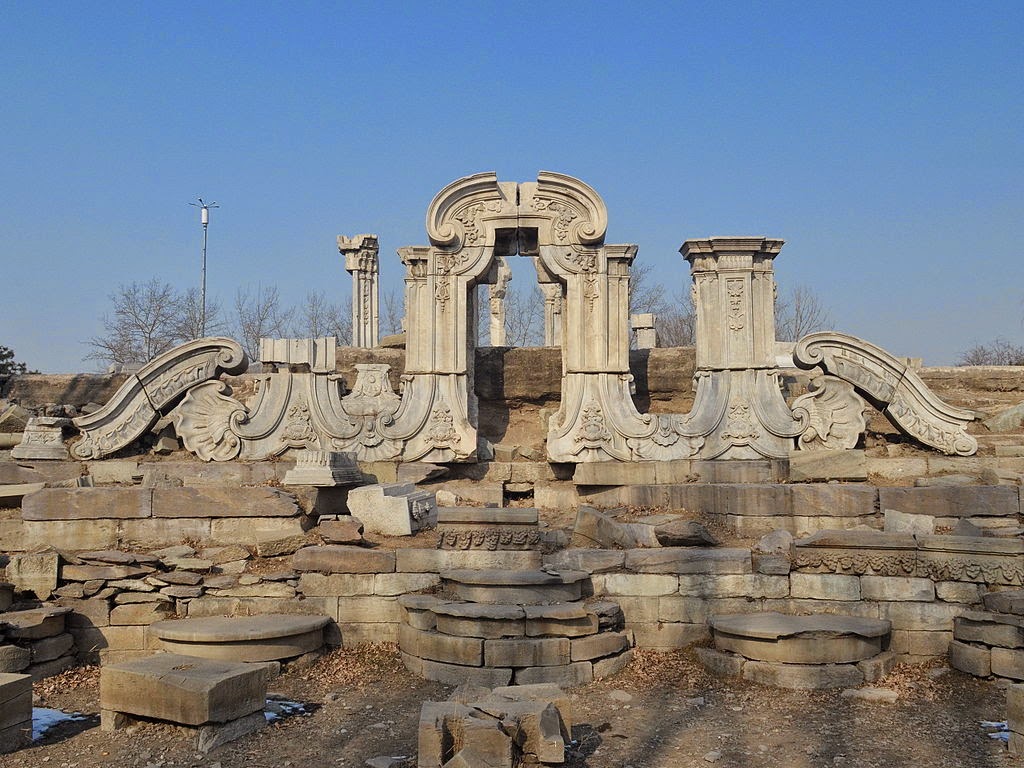
Thomas Bruce, the 7th Earl of Elgin and 11th Earl of Kincardine, brought heartbreak to generations of Greeks for his pillaging of half of the Parthenon Marbles. Following in his father’s footsteps, James Bruce – the 8th Earl of Elgin – is notorious in China for ordering the destruction of the beautiful Old Summer Palace, known as Yuan Ming Yuan (the Gardens of Perfect Brightness), in Beijing. 
Ruins of the Old Summer Palace, known as Yuan Ming Yuan (the Gardens of Perfect Brightness),
in Beijing [Credit: WikiCommons]At the time, he was serving as the British High Commissioner during the Second Opium War when he ordered the advancement of the army. In retaliation for the imprisonment, torture and execution of almost twenty European and Indian prisoners he ordered the destruction of the palace and reduced it to smithereens. Known as China’s Ground zero, every Chinese school child is taught that the site once held the most beautiful collection of architecture and art.
Initially, the army’s intent was to plunder the palace. Fragments of the collection at the exquisite palace were “saved” as they were looted by troops that helped themselves to the porcelain, silks and ancient books. But mostly, they destroyed what they found. One witness wrote: “In body and soul they were absorbed in one pursuit which was blunder, blunder, plunder.”
Even Lord Elgin recorded the very horror he had ordered in his diary, when he wrote: “War is a hateful business. The more one sees of it, the more one detests it.”

The Old Summer Palace as depicted in Forty Views of the Yuanmingyuan,
a series of paintings completed in 1744 [Credit: Shen Yuan, Tangdai,
Wang Youdun/WikiCommons]That could have been the end of the cultural destruction, but What Lord Elgin hadn’t counted on was retaliation. The 20-membered delegation that had gone to negotiate Chinese surrender were taken prisoners and died an excrutiatingly painful death.
Had this not happened, the palace would still exist in half its glory, much like the Parthenon exists today following the 7th Earl’s passage through Athens. Instead, the 8th Lord Elgin responded to the executions by ordering the absolute cultural destruction of the palace. It took days and days of hard work to destroy the magnificent buildings that were part of the cultural heritage of the Chinese people.
27-year-old captain Charles George Gordon wrote: “We went out, and, after pillaging it, burned the whole place, destroying in a vandal-like manner most valuable property which [could] not be replaced for four millions. We got upward of £48 apiece prize money…I have done well. The [local] people are very civil, but I think the grandees hate us, as they must after what we did the Palace. You can scarcely imagine the beauty and magnificence of the places we burnt. It made one’s heart sore to burn them; in fact, these places were so large, and we were so pressed for time, that we could not plunder them carefully. Quantities of gold ornaments were burnt, considered as brass. It was wretchedly demoralising work for an army.”

The looting of the Palace by British and French soldiers in 1860
[Credit: WikiCommons]Victor Hugo in his “Expedition de Chine” says: “Two robbers breaking into a museum, devastating, looting and burning, leaving laughing hand-in-hand with their bags full of treasures; one of the robbers is called France and the other Britain.”
He helped organize an auction where the spoils were sold to raise money for the families of dead or wounded soldiers. These days, many of these works sit in all kinds of private and public collections. The Chinese feel resentment, much like the Greeks feel when considering the theft of the Parthenon Marbles.
For instance, seven of the zodiac heads that were part of the palace’s collection are in China, whereas the other five are sitting in foreign collections. The National Treasures Fund, affiliated to the Chinese Ministry of Culture, is seeking ways to track down the artworks and take them back to China, however the British museums show the same arrogance that their earls showed when destroying other culture’s heritage.
These days, Lord Elgin tells the BBC that it’s better to look forward than back all the time regarding the events of 1860, and the same could be insinuated for the Parthenon Marbles. It seems that arrogance and disregard for other culture’s can be considered the Elgin legacy.
Watch the dosumentary 'The Destruction of China's Yuanming Yuan (The Old Summer Palace)' on ArchaeoTube.
Source: Protothema [February 03, 2015]

